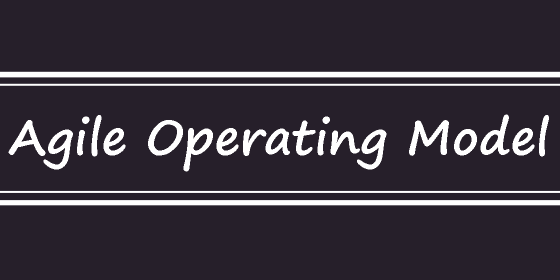Agile Operating Model

An Agile Operating Model is a way of structuring and running an organization that embraces agile principles and practices to enhance its ability to respond quickly and effectively to changes in the business environment. It goes beyond just adopting agile methodologies in software development or project management and extends agile principles throughout the entire organization.
Key characteristics of an Agile Operating Model include:
- Customer-Centricity: The model places a strong focus on understanding and meeting customer needs and preferences. Customer feedback is continually gathered and integrated into decision-making processes.
- Cross-Functional and Self-Organizing Teams: Agile Operating Models promote the formation of cross-functional teams that have the autonomy to make decisions and organize their work. This structure promotes collaboration and reduces dependencies on hierarchies.
- Iterative and Incremental Delivery: Work is broken down into smaller, manageable increments that can be completed within short time frames. Teams deliver incremental value in each iteration, allowing for faster feedback and adaptability.
- Continuous Improvement: The Agile Operating Model fosters a culture of continuous learning and improvement. Teams regularly inspect and adapt their processes to optimize efficiency and effectiveness.
- Transparency and Communication: Open and transparent communication is encouraged at all levels. Information is shared openly, and progress is visible to stakeholders, promoting trust and alignment.
- Empowerment and Trust: Team members are empowered to make decisions and are trusted to deliver on their commitments. Hierarchical controls are minimized, promoting a culture of trust and accountability.
- Lean and Value-Oriented Approach: The model encourages the elimination of waste and focuses on delivering value to customers. Activities that do not directly contribute to value are minimized or eliminated.
- Rapid Feedback Loops: Regular feedback loops are established to gather insights and data that guide decision-making and improve outcomes.
- Strategic Alignment: Agile Operating Models align team goals and initiatives with the broader organizational strategy, ensuring that every effort contributes to the overall vision.
Implementing an Agile Operating Model often requires a cultural shift within the organization, as well as changes in processes, structures, and leadership practices. It is not just a methodology but a comprehensive approach to running the organization with agility, responsiveness, and customer-centricity at its core. When implemented effectively, an Agile Operating Model can help organizations adapt to change faster, innovate, and thrive in a dynamic business landscape.